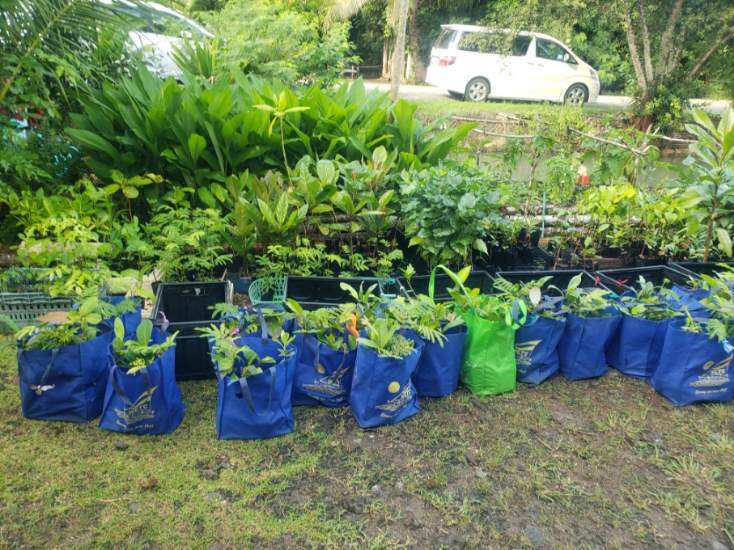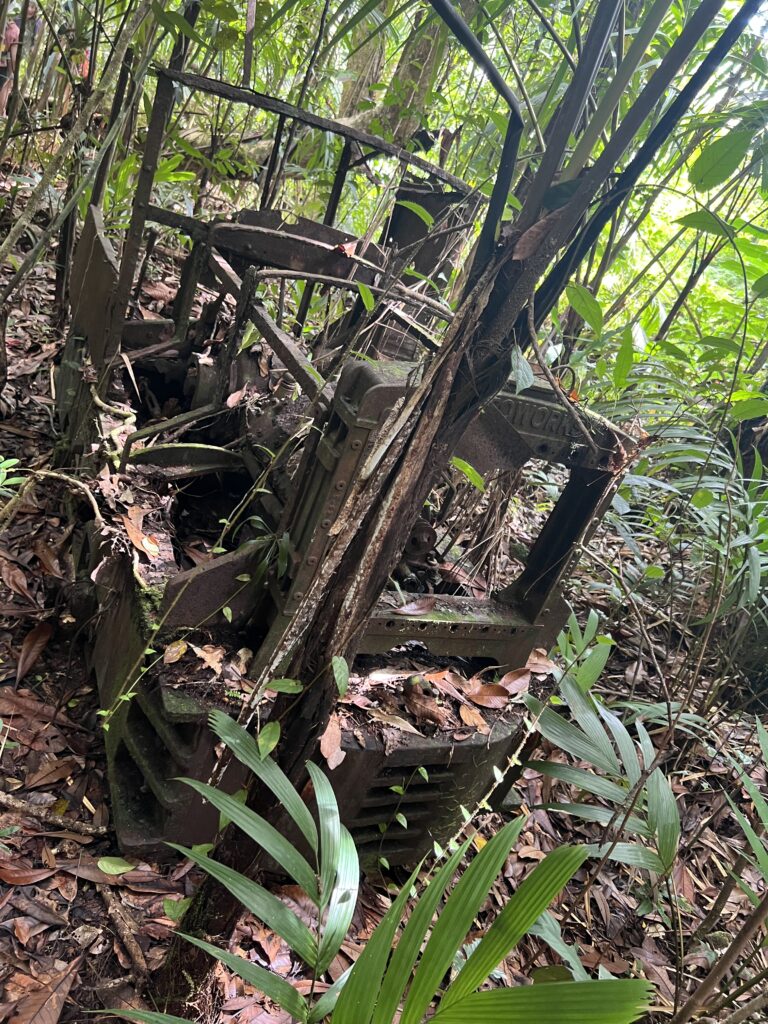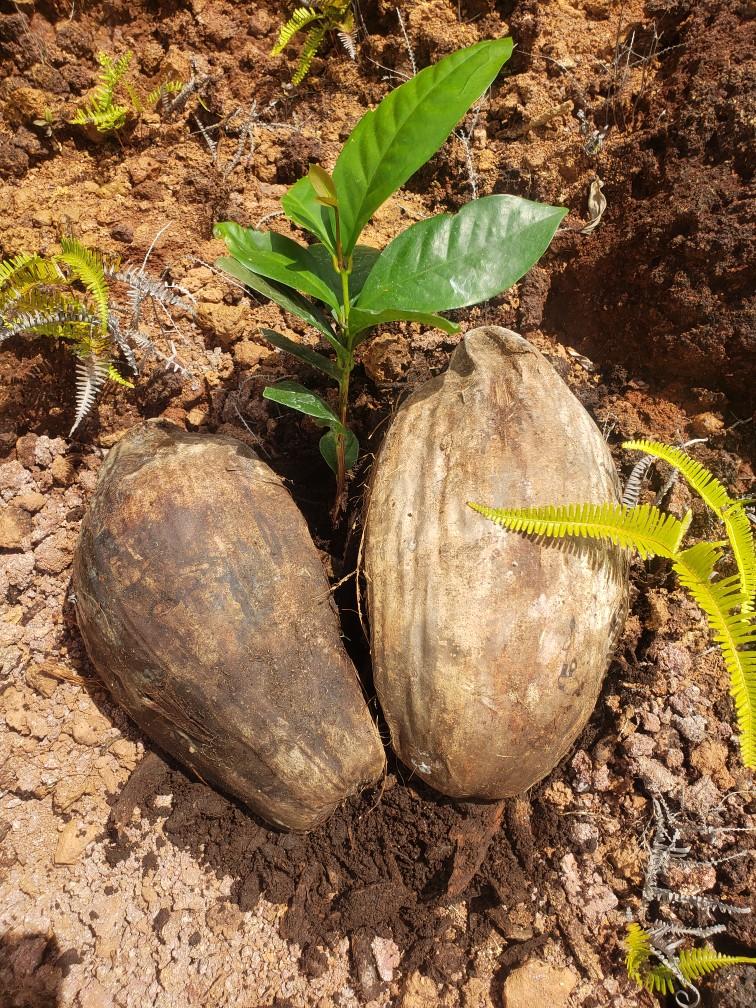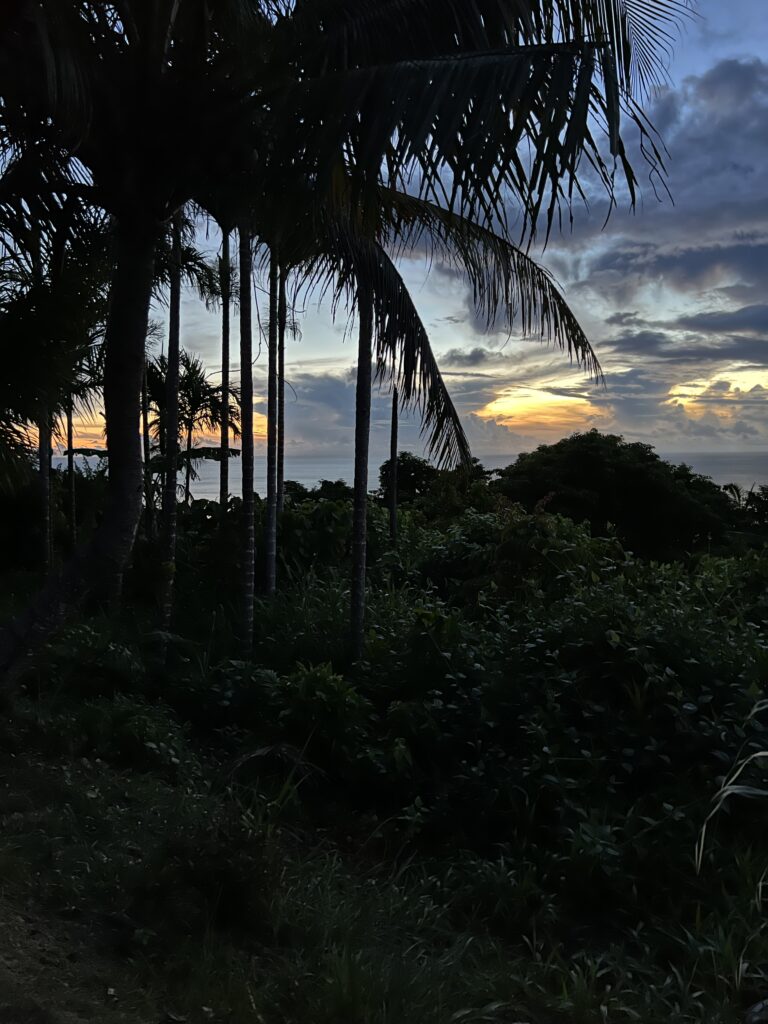Immediately after breakfast we loaded up the truck with over 100 native plants grown by the Ebil Society. These plants consisted of; kisaks, ukall, las, blacheos, btaches and rebotel. All plants are either grown from seed or cuttings at the Camp Ebiil greenhouse.

After loading the plants, we drove to meet the Ebiil Society Staff at the bauxite mines in Ngardmau. Prior to WWII, the Empire of Japan began mining for Bauxite ore (used to make Aluminum), which caused severe deforestation and soil degradation. This left the area eroded, bare, and infertile, making the terraced hillsides the subject of restoration efforts.


Misinterpreting the directions to the planting site, we had the pleasure of our very own jungle adventure. We forged our own trail through the dense vegetation of a ravine. Despite the detour, we were grateful for the experience, ultimately discovering the remains of a boxcar system and coming out at the planting site covered in orange mud.



Reaching the planting site, we found the Ebiil Society staff ready with all of the saplings and planting supplies. Prior to our arrival, they had dug holes in a grid pattern across six different plots. We were provided a demonstration on the planting technique. The first step was to add a base layer of mulch, an organic compost mixture produced by the Ebiil Society, in the bottom of the hole. Next, we carefully removed the plant from the growing container and placed it on top of the mulch layer, trying to keep the roots intact. Then, we filled the rest of the hole with mulch and surrounding soil. Once the saplings were in the ground we placed coconut husks around the base in order to reduce competition and provide slowly released nutrients. After a plot was completely planted, we placed palm fronds between rows of plants perpendicular to the slope. This helps to slow the corresponding flow of water during rain events, helping reduce erosion and increase uptake of water by the new plantings.


After we finished planting and had a lunch break, we traveled over to the nearby watershed that consisted of a stream that led to several pools of water and into a waterfall. We all enjoyed this refreshing water after a hard day’s work in the hot sun. Many of us sat in the pools, washing off the mud we had gained from our earlier excursion and admiring the freshwater shrimp.
Later on, some of us went to enjoy the sunset from a nearby lighthouse built by the Japanese, which, with the help of WWII destruction, has since degraded. There, we asked questions about the northern islands of Palau and the local dugong populations. After a delicious dinner, we enjoyed each other’s’ company, talking and laughing into the lightless hours.


